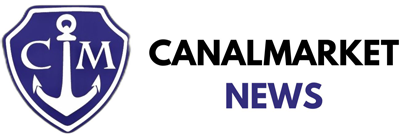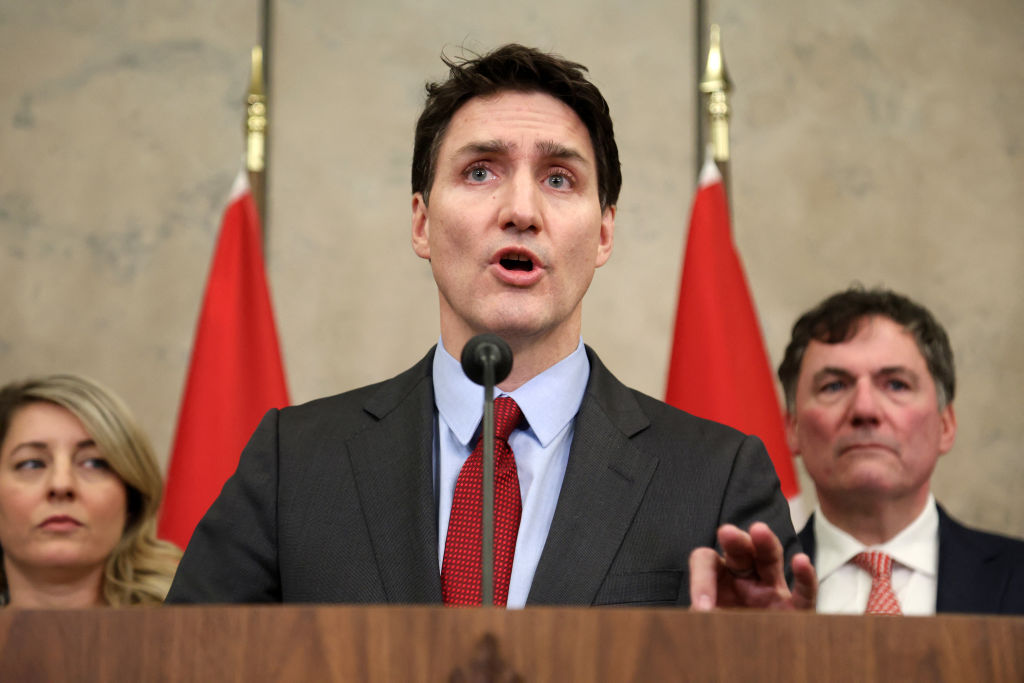
Belting out a national anthem at a sports event is a quintessential patriotic act. But who knew that booing an anthem could feel even more patriotic? So was the case last weekend, as fans across Canada, from the Toronto Raptors arena to the Calgary Flames rink, booed otherwise routine performances of “The Star-Spangled Banner.”
[time-brightcove not-tgx=”true”]
After Donald Trump’s incessant goading of Canada—threatening steep tariffs, and urging it to become the 51st state—Canadians had cause.
It felt inspiring even to me. I’m a Canadian citizen, but my relationship with Canada has been tenuous, given I grew up in Britain and work in the U.S. My cultural competence is only passable: I know the go-to order at Timmies (Tim Hortons) should be a double-double (coffee with two creams and two sugars). I know a loonie is a coin, a beaver tail is a fried pastry, and I can get by with kilometers and French. But at this moment, I’ve never felt more Canadian.
Even before his second inauguration, Donald Trump started teasing his Canadian counterpart, calling the prime minister “Governor Trudeau,” and encouraging the proud country to simply become a U.S. state, in almost the same imperialist breath as the suggested takeover of Greenland and the Panama Canal. Then, he announced his long-promised tariffs.
It is difficult to know how serious Trump is about his claims that Canada should become America’s 51st state—or if he is simply using the line as a “negotiation tactic.” Either way, such claims have spurred a wave of Canadian pride—a “Canada First” sentiment—and international solidarity, which may end up backfiring for America.
Indeed, even though Trump has paused his proposed tariffs, the moose may be out of the bag.
Tariff threats
On February 1, Trump announced tariffs of 25% on Canadian imports, and 10% on energy, backed by the claim that the U.S. is “subsidizing” Canada (it’s not), and under the auspices of bringing manufacturing back to America (which his first-term tariffs did not do).
The new tariffs alone, which former Treasury Secretary Larry Summers called a “self-inflicted wound to the American economy,” would be detrimental to American consumers. Mainstream economic thinking is that consumers would pay higher prices for goods, from foodstuffs to lumber and oil, and feel knock-on effects on items like homes and gas—not to mention the supply chain chaos. “Disruption is inflationary,” says Steven Farrazzi, professor of economics at Washington University in St Louis.
Perhaps Trump did not expect the retaliatory tariffs from Canada on classic American items including meat, cheese, peanut butter, molasses, wine, plywood, and firearms. In a speech, Trudeau encouraged his fellow citizens to swap Kentucky bourbon with Canadian rye, and forgo Florida orange juice. Though more concentrated, these retaliatory tariffs would also hurt American businesses, Fazzari says.
From British Columbia to Ontario, LCBOs (government-owned liquor stores) took down American bottles. Doug Ford, the conservative premier of Ontario, also ordered the ripping up of $100 million contracts with Elon Musk’s Starlink.
Likely concerned with the stock market dive, an all-out trade war may have been a bridge too far for Trump. He called the tariffs off as Canada agreed to raise its border vigilance against fentanyl, which Trudeau had already announced in December. It’s probably not a fight with Canada that Trump ultimately wants, rather the ability to show his strong-arming produces results.
Experts say Trump’s actions amounted to a bluff. “It’s all posturing more than anything,” says Xiao Wang, co-founder and CEO of Boundless Immigration, a software-based immigration firm.
The 51st state
That said, the provocation about merging Canada into the union lingers. On February 2, Trump posted: “Canada should become our Cherished 51st State. Much lower taxes, and far better military protection for the people of Canada—AND NO TARIFFS!”
It feels so absurd to even consider the highly hypothetical prospect of this merger. But how would such an outlandish situation play out logistically, and what it would mean for Canadians? Jelena Dzankic, co-director of the Global Citizenship Observatory at the European University Institute in Florence, offered three potential outcomes.
First, both nations could pass a transnational agreement to form a union, like the European Union, meaning each country retains sovereignty and separate citizenship, but allows for free movement, and possibly a common market and defense. Canadians could live in the U.S., and vice versa. Honestly, as a Canadian citizen working in the U.S., I’ll admit that’s somewhat appealing, given the toiling visa bureaucracy it would avoid, without it feeling like an assault on Canadian pride. But this scenario is unlikely, says Dzankic; the U.S. wouldn’t want to give up its strong sovereign position.
The second potential outcome would be that Canadians vote in a referendum to join the U.S. It would be unwieldy to bring such a huge country into the union, but it could also enter as ten provinces. This scenario is also unlikely, not least because Republicans would balk at the potential of new states skewing the electoral college against them. Plus, Canadians are unlikely to vote in favor of joining the U.S. “Why would they?” Dzankic says. “[They] have welfare.”
Third—Dzankic’s “doomsday scenario”—is illegal annexation against Canadians’ will. It’s unclear how citizenship would work; in 2023, Russia mailed Ukrainians passports in a coercive effort to align the population with Russian values. Annexation is extremely unlikely, but if Trump were actually serious, it’d be the only option left if Canadians were, unsurprisingly, unwilling to cooperate.
It is important to note that absorbing Canada is also in direct opposition to Trump’s own hardline immigration platform; it would mean automatically ushering in 40 million new incomers, approximately the population of California. Plus, Canada’s population is diverse—in part because during Trump’s first term, Trudeau positioned Canada as a safer alternative for immigrants.
Canada welcomes nearly half a million immigrants annually, including many from places like India and Afghanistan. In 2023, Canada was home to about 8 million immigrants with permanent residency, 20% of its population, and it resettled 51,000 refugees. Overall, Canada’s population is approximately 5% Indigenous and 5% Muslim—versus roughly 1% in the U.S. So a Canada merger would bring in many immigrants of color. “That might be one of the deterrents for Trump,” Dzankic says.
So why would Trump sacrifice his immigration platform in order to goad Canada? Perhaps the Trumpian playbook isn’t driven by principles, rather by sowing chaos and using everything on the table as a negotiation tactic, which Wang describes as: “Let me throw so much at the wall that you can’t clean it all up.”
But conversely, up north across the 49th parallel, Trump’s actions have created some solidarity at a time when Trudeau’s Liberal Party has been on the rocks, and it’s felt like only a matter of time before the Conservative Party, led by a quasi-Trumpian Pierre Polievre, would mount a victory.
Instead, liberals are asking where they can buy Doug Ford’s anti-MAGA hats. In response to Ford’s Starlink actions, Liberal candidate Chrystia Freeland suggested going further with a 100% tariff on Teslas. What if standing up to Trump is the very thing that saves the Liberal Party, and Trudeau’s tattered legacy?
The newly awakened Canadian pride is not to be scoffed at. In his speech, plugging Canadians to vacation in domestic national parks instead of abroad, Trudeau suggested “finding your own way to stand up for Canada.” Canada is not just a colder version of America with a folksier accent that happens to like gravy on its french fries. It is a deeply distinctive country with its own values, including its proud diversity. “We don’t like to beat our chests,” Trudeau said, “but we’re always out there waving the maple leaf loudly.”



